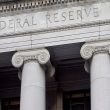by The Algonquin Team, Algonquin Capital
The road to hell is paved with good intentions.
Proverb
One of the great dilemmas in moral philosophy is whether actions should be judged based on their intentions or consequences. The difficulty, of course, arises when the impact of our intentions are unforeseen, unexpected, or unintended.
This concept of unintended consequences was popularized by the twentieth-century sociologist Robert K. Merton. In his 1936 paper,”The Unanticipated Consequences of Purposive Social Action”, Merton examined the causes behind and the types of unanticipated outcomes. These ranged from pleasant surprises to perverse results, where the action backfires producing the opposite of the desired effect.
Take for instance the British Raj’s (not to be confused with the Algonquin raj) attempt to curb the cobra population in Delhi by offering a bounty for each dead snake. The plan was a success until some enterprising people started breeding cobras for income. Eventually, the scheme became so big, that authorities were forced to scrap the program, causing the cobra breeders to release their now worthless snakes. In the end, the net effect of the initiative was to increase the cobra population.
Another historical backfire was the ‘Four Pests’ campaign during Chairman Mao’s Great Leap Forward. The Chairman introduced a new hygiene initiative that targeted rats, flies, mosquitoes, and sparrows. Because the sparrows ate the grain that the farmers sowed, Mao believed they were depressing crop yields. Unfortunately, he didn’t realize that the sparrows also consumed vast quantities of locusts. Once the sparrow population was decimated, the locust swarms took over the country, devouring entire crop fields at a time, leading to mass starvation.
These examples serve as reminders for us at a time when several complex ‘government actions’ are unfolding or about to unfold. The Federal Reserve will commence their exit from quantitative easing, the Bank of Canada (BoC) may continue increasing interest rates, and there is the potential for significant changes to the tax codes on both sides of the border.
Over the course of three quantitative easing programs, the Federal Reserve acquired $4.5 trillion in assets which lowered long-term government bond yields by an estimated 1%. Although the Fed believes their exit plan will be an orderly one, there is a non-trivial chance it won’t be. After all, where is the $4.5 trillion going to come from to fill the void when they step back?
On the domestic front, the BoC is bent on adding volatility to the bond market as they remain tight-lipped about their plans. In a world, where central bankers are opting for a very slow withdrawal of stimulus, the Bank’s eagerness to hike stands out as an anomaly. At this point, it’s interesting to note, that one of the earliest references to unforeseen outcomes was in a letter from John Locke to Sir John Somers (MP) about the unintended impact of interest rate regulation.
Lastly, the ‘minor tweak’ proposed by the Canadian government, is the most significant change to the tax code in years, while the promised US tax overhaul may end up being only temporary. As tax policy affects return on capital, succession planning, business expansion plans, etc. it is difficult for the bureaucrats to predict the medium and long-term consequences of their planned changes.
We are not necessarily foreshadowing doom and gloom, as “undesired effects are not always undesirable” (Merton, 1936). But given the sheer scale and complexity of these endeavors, it seems reasonable to “expect unexpecteds” (Algonquin raj, 2017).
Copyright © Algonquin Capital
















